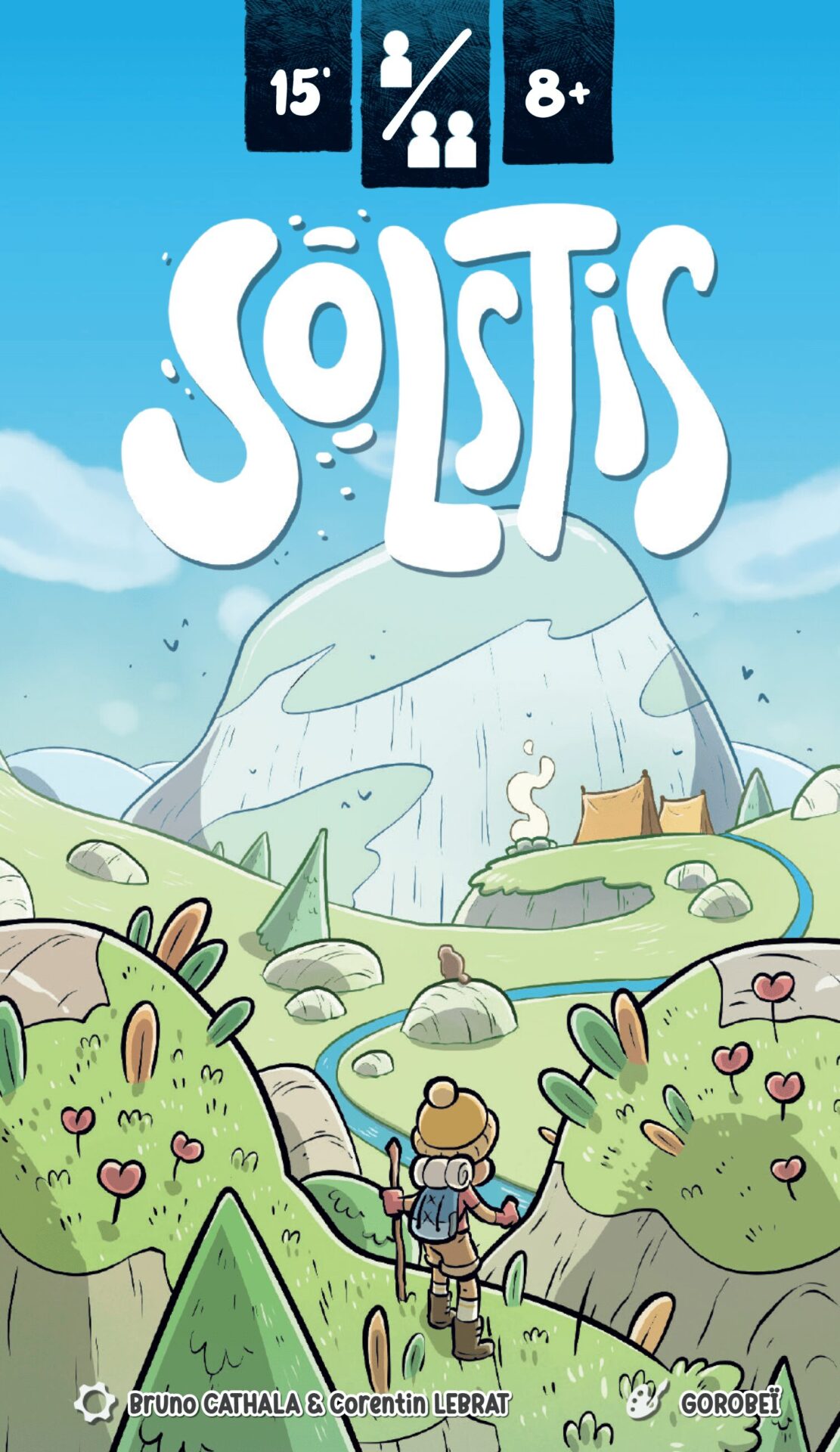A review copy of Solstis was kindly provided by Hachette Boardgames UK. Thoughts & opinions are my own.
I confess. I have a real thing for games in small boxes at the moment. So when Soltis found its way into my home, I was excited. I was even more excited knowing that it’s a game from a certain Monsieur Bruno Cathala. I cut my teeth in this hobby on tile-placement games, like so many others, through games like Carcassonne and Zooloretto, so I’m always pleased to see a new one. Especially one which packs such a fun punch into a teeny box and 15 minutes of my time. Solstis is great.
Included in the little box are tiles which make up a panoramic mountain vista. Each tile is unique and indicates which row and column it lives in. Your job is to collect and place tiles in such a way that you create big, contiguous areas of mountain, and where possible, trace routes from the bottom to the top. It would be easy if it weren’t for the pesky second player, who’s also doing the same thing with the same shared pile of tiles.
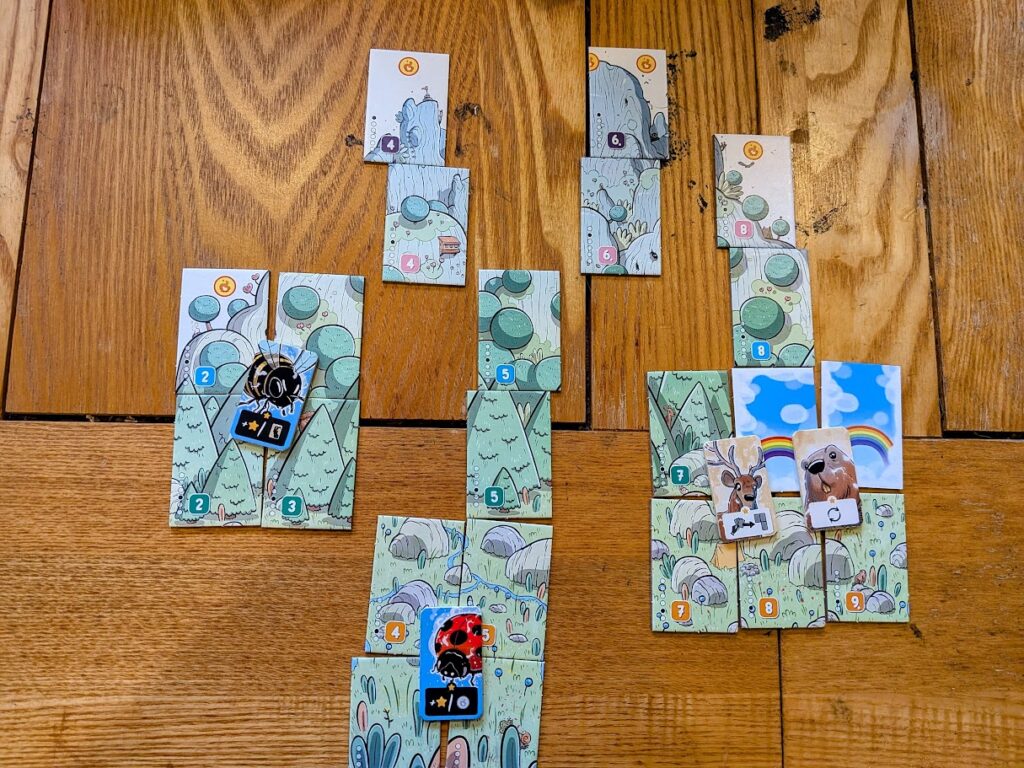
Playing the game is simple. You have three tiles in hand, and there’s a tile display in the middle of the table. You play a tile from your hand and choose any of the other tiles on offer which have a matching number (the number indicates which column they belong in), then place both your played tile and your captured tile into your own, personal, panorama. If there’s nothing in the display that matches a number in your hand, you can add a tile to the display, draw a random tile from the pile and see if that matches. If even that fails, you take a rainbow tile, which is wild and can go anywhere.
Show some spirit
You’ve learned just about all you need to know to play Solstis now, with the exception of the pieces which add the most chaos into the game – the spirit tiles. If you complete a 2×2 group of tiles on your turn, you can grab a couple of tiles from the face-down spirit pile, select one, and place it on top of the spot where the four tiles join. Any spirits you don’t choose go back face-up, and future spirit bonuses can choose from this discard too.
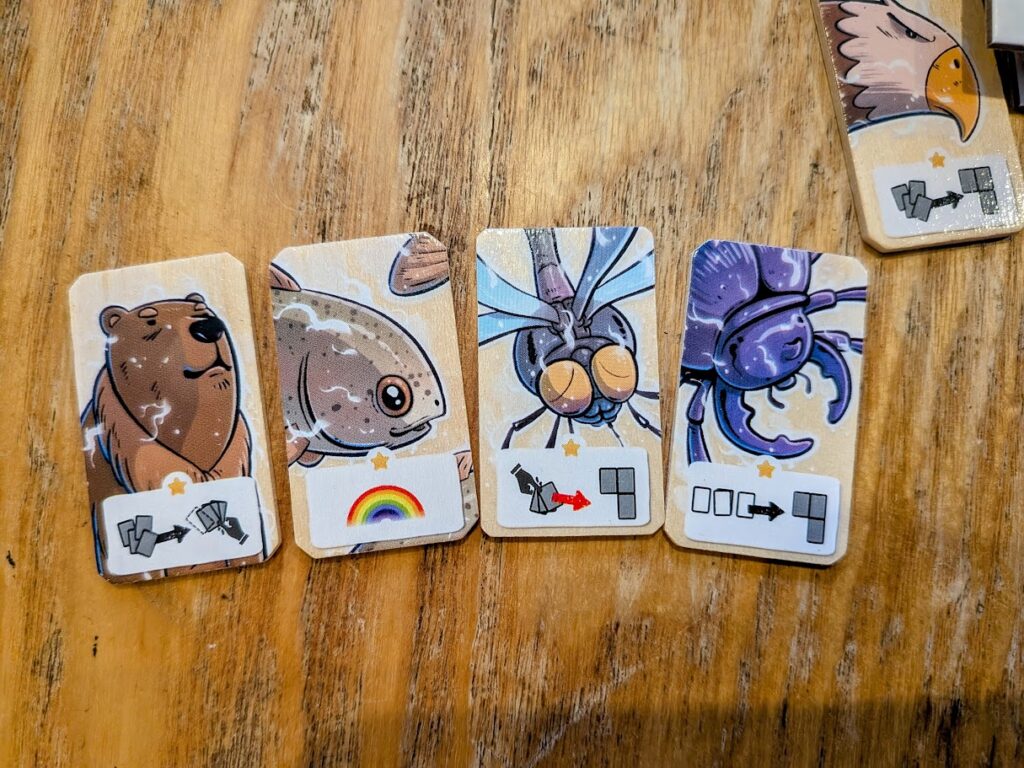
The spirits really throw the cats among the proverbial pigeons. Some give you an immediate bonus, like ‘take another turn’, whereas others give you end-of-game scoring opportunities. Getting the end-of-game tiles early is great, as it can give you a rudder for your otherwise aimless building.
Solstis is one of those games where you need your head on a swivel. Knowing what your opponent is up to is as important as knowing what you are doing. There’s no point in betting on that one tile that joins up two big sections and a big score, only to fail to notice that it’s already in the other person’s panorama.
Speaking of other people, Solstis is one of those games that you can play and practice even when there isn’t a player two at your table. There’s a very simple solo opponent you can play against that emulates another person. It has the same DNA that all good bots have, where taking their turn requires almost no brain power on your part. It means you can concentrate on what you want to do the whole time, and just run the bot’s turn with no effort.
Final thoughts
Solstis is a game which only takes ten to fifteen minutes to play, so this was never going to be a particularly long review. It’s not the game you’ll take to your local games night to get stuck into for three hours, but it fills a lot of other nice gaps. It’s the perfect game to start or end that same games night with, for example. It’s another of those games that I think is great for that gap between ordering your food at the pub and it arriving, although Solstis does need a decent-sized table.
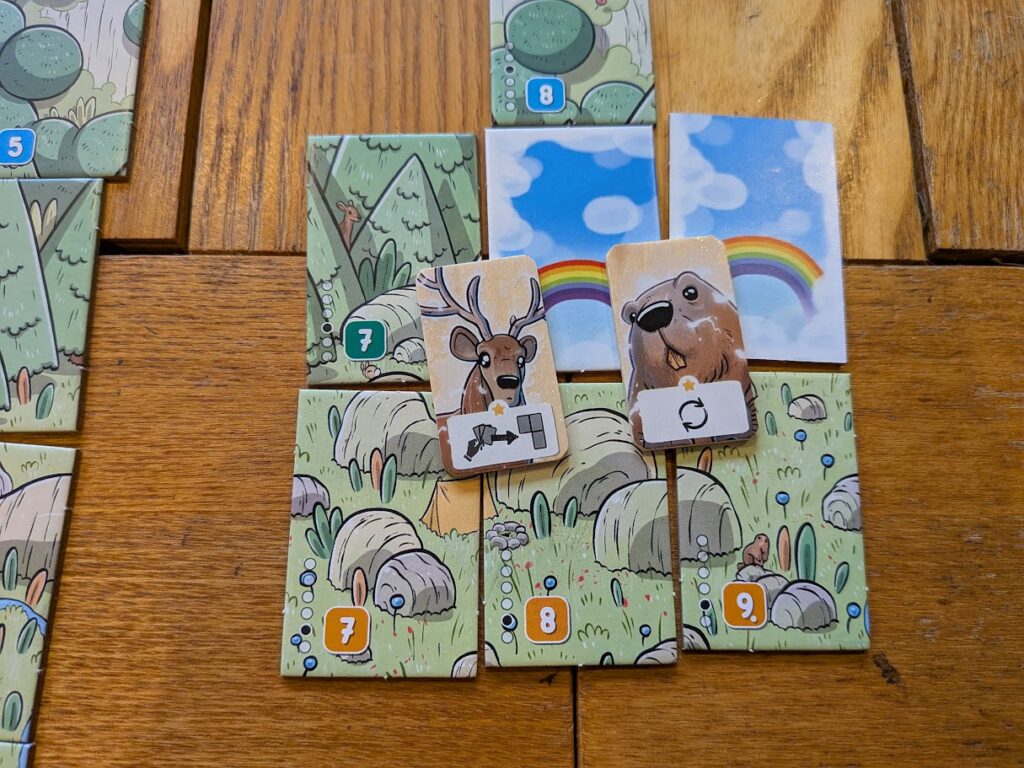
At first, I was underwhelmed by the components. The cardboard tiles are serviceable, but not especially thick. But once you start playing, they’re oddly satisfying. The little thwack when you put one on the table is great, and they’re an unusual size and shape, which makes them fun to play with. The spirit tiles are the stars, though. I’m not sure what they’re printed on, but it feels like thin balsa wood, and they’re really touchy-feely.
Bruno Cathala is a bit of a genius (Sea Salt & Paper, 7 Wonders Duel, Jamaica, among others), and Solstis, with help from co-designer Corentin Lebrat, is no exception. Tile-placement is obviously in his blood, as Kingdomino and its various spin-offs have proven, and Soltis is another fine example of his work. We’re talking about a game you can pick up for £15-£20. Manu Gorobeï’s artwork is beautiful, and it’s just a wonderful little box of fun.
Enjoying this article? Consider supporting me.
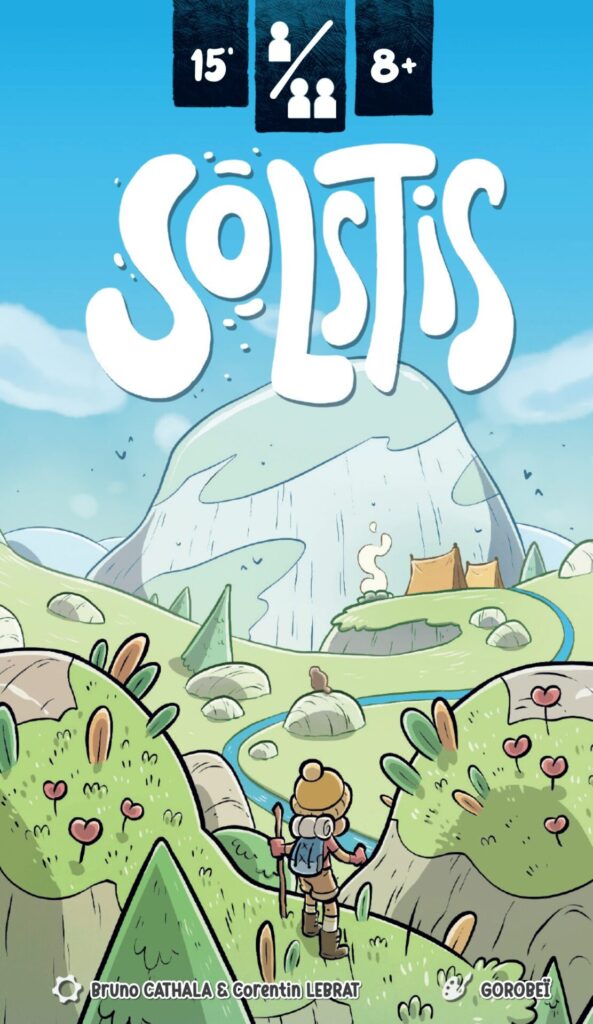
Solstis (2024)
Design: Bruno Cathala, Corentin Lebrat
Publisher: Lumberjacks Studio
Art: Manu Gorobeï
Players: 1-2
Playing time: 15 mins
